Why leave your roofs an empty canvas if they could be put to work for the environment?
The residential roof is often underutilized. This large surface is a blank slate that can do more to make homes more efficient than people typically realize. Here, we break down three green roofing options that offer more benefits (and a lot less environmental impact) per square foot.
Solar Power
Solar panels have been growing in popularity as a means of reducing home energy usage and costs. The rise has been helped in part by government pushes in places like California, which, after 2020, will require all new homes under three stories to include solar panels. According to the New York times, the mandate is part of the state’s drive to source 50 percent of its electricity from noncarbon-producing sources by 2030. Though California’s measures are the most extreme to date, other states and cities have considered similar legislation.
On existing homes, solar might not always be possible—things like the roof’s load capacity, material type, and sun exposure need to be taken into consideration before deciding to install. But though the panels can be expensive, proponents argue that homeowners will more than offset the costs with the energy savings that solar power brings. Many solar providers also allow homeowners to lease panels, instead of buying them outright.
See LG's NeON R solar panels being installed here:
After years of growing popularity, solar panel manufacturers have come up with a number of innovations and configurations. Standard photovoltaic panels require frames or racks to hold them to the roof, while others, like the Sun2 cells from Sunflare, can be attached directly to the roof with adhesives. Tesla has gone even further, introducing roofing tiles that have hidden solar capabilities.
Solar options to consider:
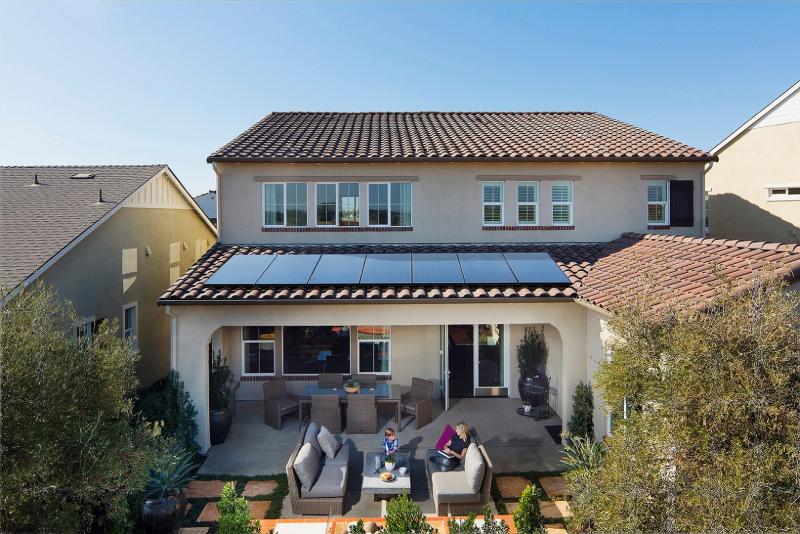
Maxeon cells from SunPower produce 75 percent more energy than conventional panels and are corrosion and breakage-resistant, the company says. Sleek Equinox panels, paired with the company’s InvisiMount frame, give a low-profile look to roof-mounted arrays. Each panel also has built-in microinverters to minimize power disruptions. The company offers a 25-year product warranty that includes installation and shipping.
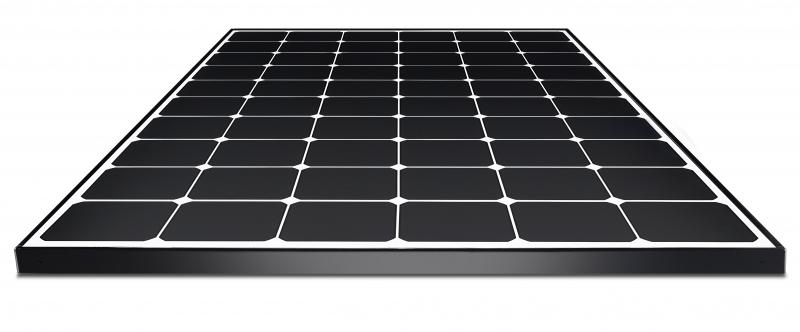
NeON R is the latest residential solar solution from LG. It features flexible array design, simple installation, and a high wind and snow load rating. The 365W power output is 26 percent higher than conventional panels, the company says, and an improved temperature coefficient helps the panels perform better on sunny days. The company offers a 25-year product warranty covering labor and delivery.
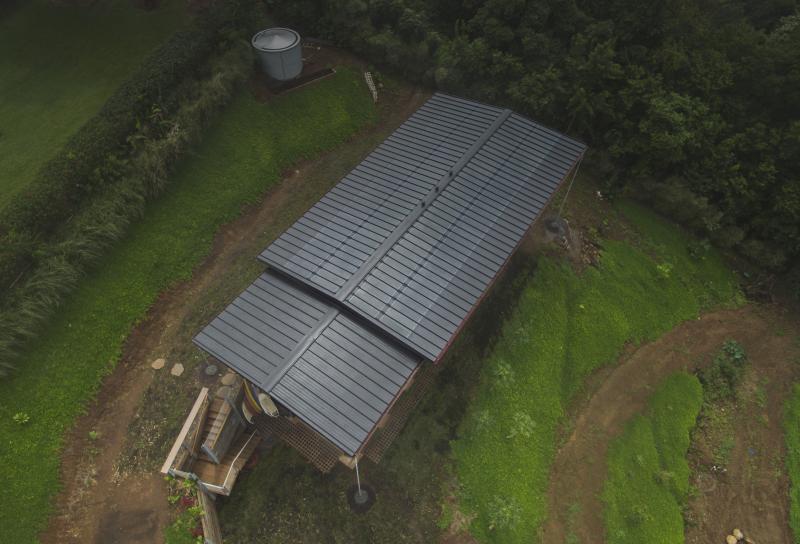
SUN2 is a flexible and lightweight solar product that consists of thin layers of stainless steel, copper, indium, gallium, and selenide semiconductors. Measuring only a few micrometers thick, the product can generate 10 percent more energy than traditional solar panels for comparable costs, the company claims. Sunflare panels also use 80 percent less energy than silicon panels use from birth through installation, the company says. Panels are installed directly onto the roof with an adhesive and can be cut to fit.
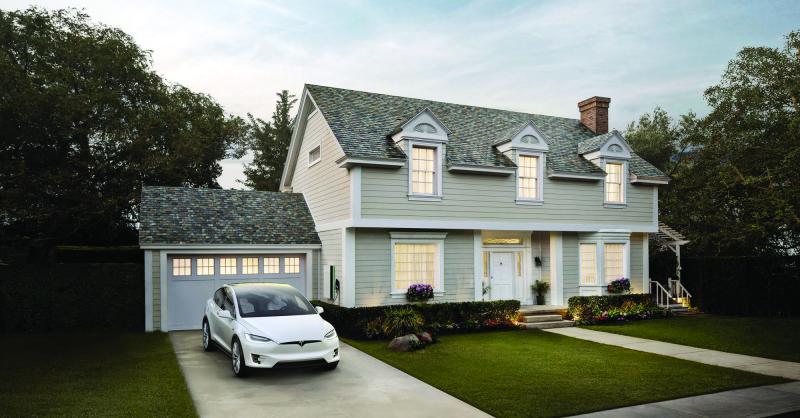
Tesla’s Solar Roof uses individual tempered glass solar tiles that look like traditional roofing materials but are three times stronger, the company says. Solar tiles can be mixed in with non-solar tiles to achieve the appropriate power levels. Both appear the same from the street level. Four looks are available, including Textured, Smooth, Tuscan, and Slate (pictured).
Other manufacturers:
Go Green
Another way to utilize roof space is by installing a vegetated, or green, roof. Green roof systems use drought-resistant plants (that differ depending on the climate) to create a thin layer of vegetation over a portion or the entirety of a roof. Aesthetically, green roofs can help a home on a wooded lot blend into its surroundings or give visual appeal to a flat roof section that is visible from an interior room.
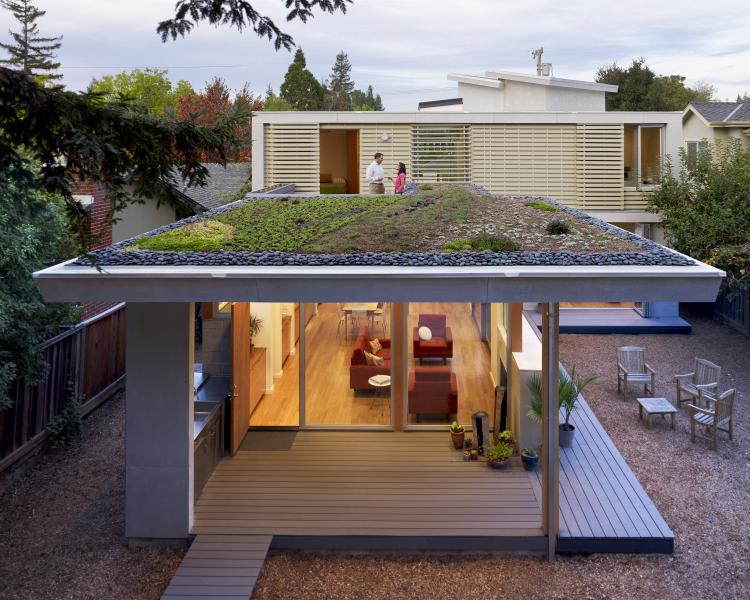
2 Bar Home by Feldman Architecture / Photo by Joe Fletcher
Aside from looks, green roof plants can protect roofs from UV rays, reduce and filter stormwater runoff, produce oxygen, absorb heat and CO2, and insulate homes from noise and temperature changes, according to green roof design and installation company Brooklyn Greenroof. For some, this list may outweigh the costs—Brooklyn Greenroof estimates $15 to $40 a square foot, depending on the type of plant.
Low-maintenance stonecrops and hardy grasses are popular choices for green roofs, but the ideal plant mixture is highly dependent on the home’s environment. Because of the wide variety of plant options and configurations, green roofs can be sourced in a number of ways. Some architects or builders choose to use green roof manufacturers, like LiveRoof, who offer a number of predetermined plant modules that can be easily installed on a number of roof types and sizes. Others prefer to use local landscapers to create a unique solution.
“There’s a science and art to planting green roofs as there are so many limiting factors and unique conditions,” says Christopher Kurrle, LEED GA, a partner at Feldman Architecture. “We always work with installers, landscape teams, and manufactures that can help select plants that are appropriate to the unique conditions and intended functions of each vegetated roof.”
See more information on LiveRoof here:
Every green roof installation is different, but roofs are typically outfitted with a waterproof membrane before plants are added. Module systems usually require premade plant boxes to be fitted next to each other, while other solutions might be installed much like plants in a backyard. The building structure also needs to be assessed to make sure it can handle the load of the green roof system.
Dealing with a building product that is alive makes for a number of unique challenges. Depending on weather conditions or the availability of an irrigation system, a green roof may need to occasionally be watered by hand. Once installed, the plants also need time to adjust to their new surroundings.
“Finding the right mix of plants that are happy together given all of the limiting factors of each roof typically involves a little bit of trial and error,” Kurrle says. “Like all landscaping, a roof garden will take 2-3 seasons of growth to really establish itself.”
Green roof options to consider:
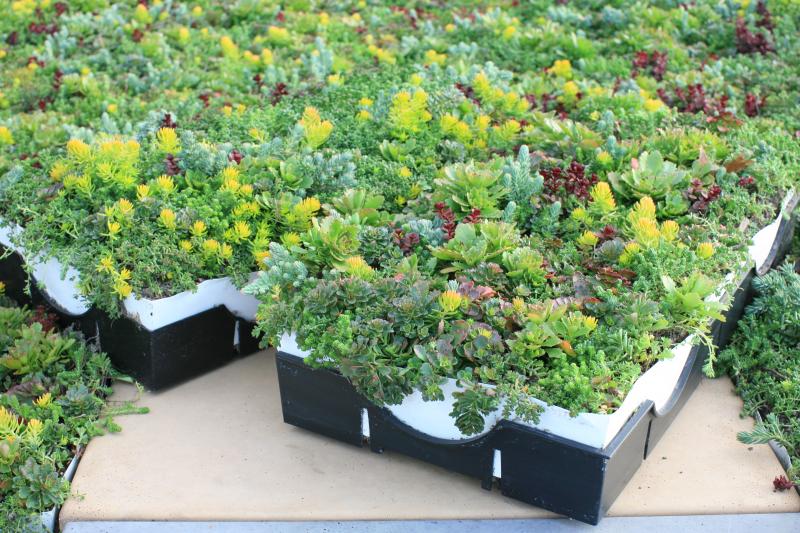
LiveRoof manufacturers four types of green roof systems with different soil depths, weights, module sizes, costs, and plant make-ups. Each module is filled with the company’s engineered growing medium before the plants are inserted. The systems can only be installed by certified LiveRoof contractors.
Other manufacturers:
Reduce, Reuse, Recycle
If green roofs and solar panels do not fit the taste of your clients, there is another green option. Swapping standard shingles for products made with recycled materials is the easiest way to make roofs do a little extra work.
These shingles, often made from recycled plastic or rubber, come in a variety of shapes and sizes that can match the traditional looks of cedar or asphalt. Malarkey Roofing Products, for example, has partnered with GreenMantra to release a series of shingles made from Crayola markers. Meanwhile, tiles from Ecostar are mainly composed of recycled rubber and plastics.
Recycled roofing products can be made in traditional looks, including slate and cedar shake. The benefit? “[A] purchase of EcoStar products assists in the diversion of millions of pounds of scrap rubber and plastic from landfills annually,” the Ecostar website says.
Recycled roof options to consider:
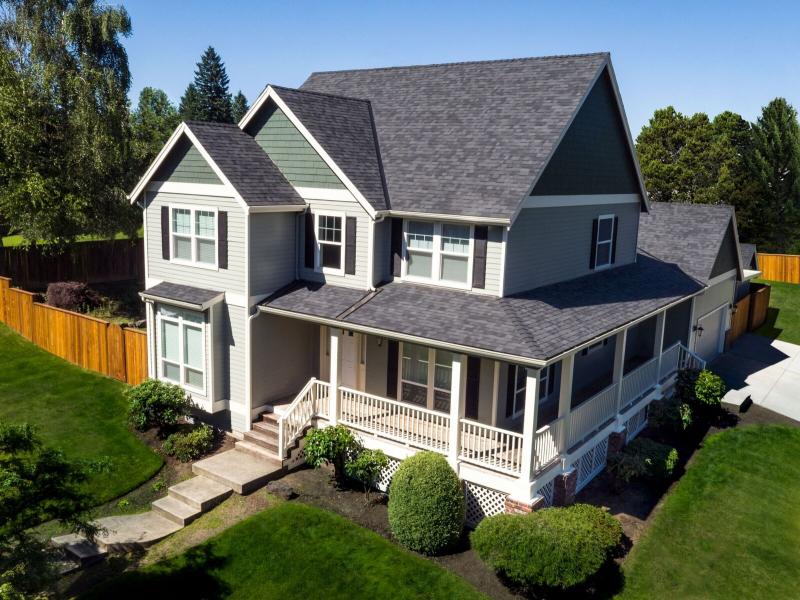
Malarkey Roofing Products
The roofing company partnered with GreenMantra, a company that recycles plastics, to source the main ingredient for their Vista shingles: recycled Crayola markers. Collected through Crayola’s ColorCycle program, the markers’ plastic casings are ground into flakes that are then converted into a polymer asphalt additive. The polymer makes Malarkey’s asphalt shingles flexible and durable, the company says.
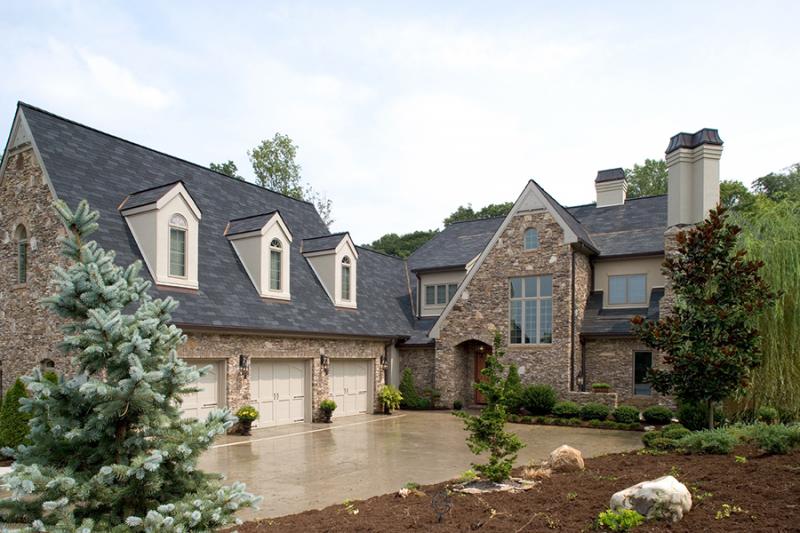
Majestic Slate is Ecostar's original product. They are manufactured from 80 percent post-industrial recycled plastic and rubber and are less than half the weight of natural slate. The tiles can protect against rain, hail, snow, fire, extreme temperature change, and UV sunlight, the company says. Majestic Slate comes in 11 standard colors that can be mixed and matched.
The company’s shakes replicate the look of cedar while using 95 percent recycled materials. The product is not susceptible to rot, mold, or insects, and can withstand weather events such as hail, fire, extreme temperatures, and hurricane winds up to 180 mph. Shakes are available in classic silver cedar (shown), aged cedar, or multi-tone looks.
Other manufacturers:

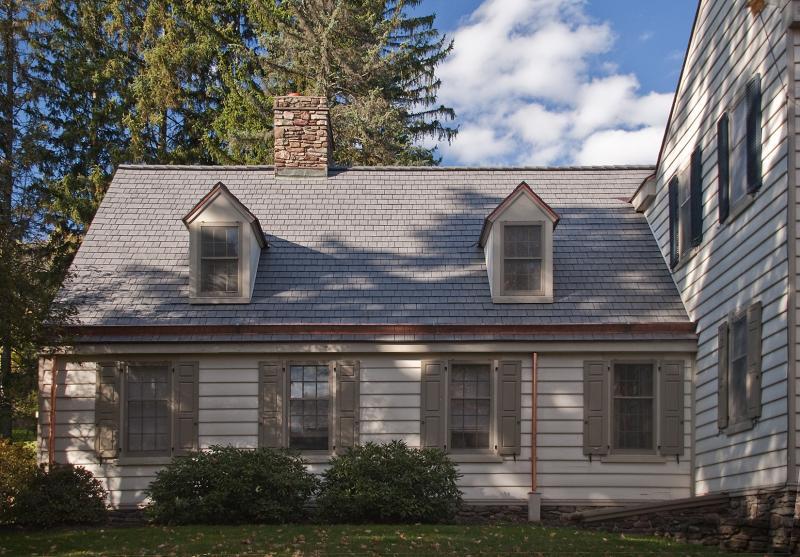
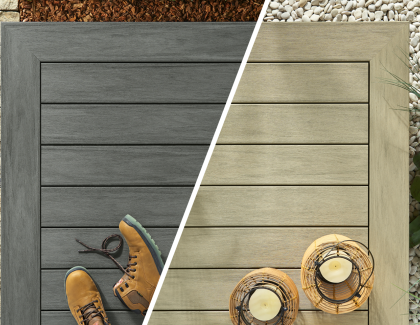


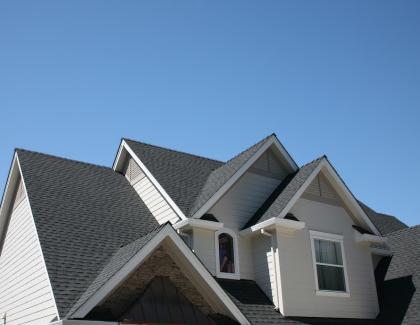


Add new comment